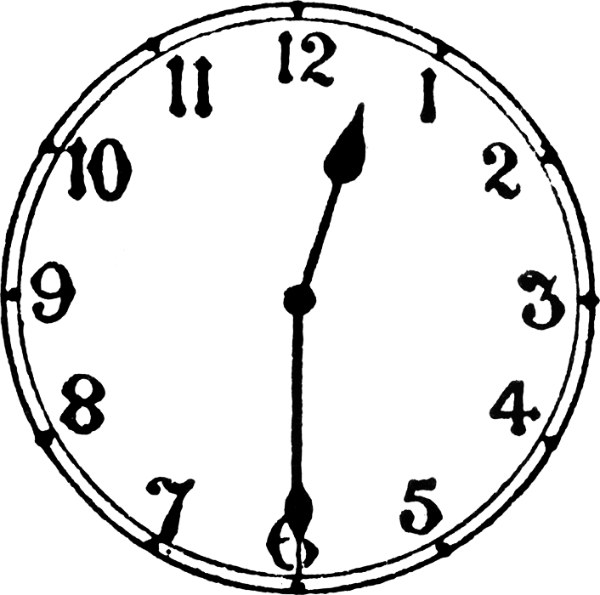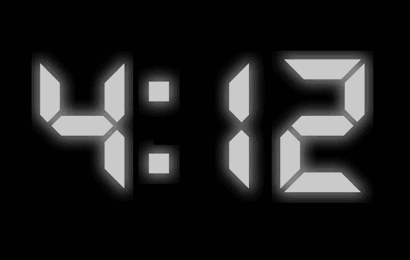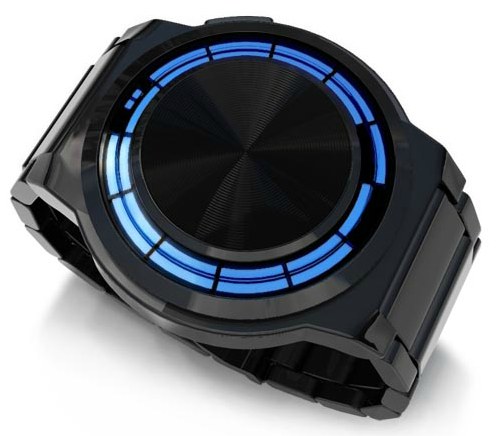
How we see time influences how we communicate and perceive time. Time for some people is waiting for hands on a dial to move into position, while for others it is carefully watching seconds precisely count away on a digital display. When I was growing up the terms “analog” and “digital” only had reference to clock and watch faces. It was not until I was a bit older did I realize those words had meaning not related to telling the time.
If someone were to ask you what time it was and the analog dial above represented the picture on your watch, what would say? You could say it is just after noon, or half past 12. You might say that it is 12:30, or ‘about’ 12:30. Or you might not say anything at all and just show them your watch face for them to read in their own way. It fascinates me how reading the time comes in so many flavors. Most of them based on how we subjectively see the time.
In the first grade I was taught how to read an analog clock dial in school. I recall the lessons pretty well. It started with the easy part – reading the hours using the shorter hour hand. The minutes were more complex because of the math involved. “Why did reading the time need to involve math!? (said my 6 year old self).” I was precise in how I communicated the time. I said things like “it is 3:31 and 43 seconds.” That was because I actually learned to tell time the easy way – on a digital Casio watch.

Even as a kid I knew that reading the time digitally was likely a superior form of communicating the time precisely and quickly. There was no math involved and no ambiguity. Though you didn’t see the date as a series of cycles and hands placed in different position. Time was just a cold hard number, relentlessly moving forward. When people senior to me used to refer to the time as being “a quarter to seven,” I would wonder at why they didn’t just say “6:45.” It was because they learned to tell time exclusively on analog faces where time was more visual than numerical.
It wasn’t until I was 18 years old did I invest in my first analog watch. It was a quartz Citizen Promaster chronograph with a metallic red dial (and I’ve never seen another watch like it since). Moving up from a plastic Casio G-Shock to this steel timepiece made me feel extra sophisticated – though I could barely read the time at first. What reason did I have to be comfortable with analog dials? My computer, phone, car, and alarm clock were all digital. It seemed as though I pretty much bypassed the analog generation.

Then I got into watches and learned that analog was pretty much king. Not because it was superior, but because it looked visually better, and us watch nuts seem to have a thing for mechanical technology. I’ve even found that when I tell people the time my words have changed. The digital generation is highly attuned to precision. If it is 8:33 then it is 8:33, not “8:35.” The inherent straightforwardness of digital time communication leaves out visual ambiguity. On an analog dial it isn’t always easy to see exactly what time it is (depending on the dial of course) – so we just sort of tend to care less. “So what if I am 5 minutes late? The little hand isn’t that far past where it was when I was supposed to be there…”
Our culture works in the same way, with people talking about and treating the time much like how they read it. Is your day measured by hand placement cycles or chronometrically measuring how many minutes are left in the day to get things done? Most people are increasingly doing the latter as digital time telling is more prolific these days than analog watch and clock dials (at least outside of watch lover circles). Related to that I find it very sad that here in the US we have tons and tons of non-operational analog clocks in public. They are much more depressing than seeing broken payphones.

Thinking of someone saying “it’s half past the hour” seems almost genteel and nostalgic. Will people still use phrases like that in the future? And how does the person they are speaking to know what hour it is half past? These are cultural mysteries that we will have to see unfold as time goes on. What I can say is that I think digital and analog time telling can live together. When I want a quick and dirty way of telling the time, I put on a digital watch, for any other circumstance I go analog because for some reason it makes the time feel less cold – more about an ongoing cycle versus a long countdown.
With our notion of time becoming more serious as we seem to each have less and less of it available, it is interesting to see how watch and clock makers are moving back to complexity. While digital time telling was about precision and speed, the new wave of whimsical time telling is about novelty and fun. Tokyo Flash for example gets attention for having cool looking dials that you can barely read. Many other watch and clock brands follow suit. Is the severity of time in our lives causing a renaissance of “I symbolically don’t want to know what time it is?” I’ve seen watches that actually make you do math to tell the time, and those which strive to be straightforward but actually require that we relearn how to read the time. Time really doesn’t change – which is the beauty of any non-social construct. Though how we read and refer to it sure does.
